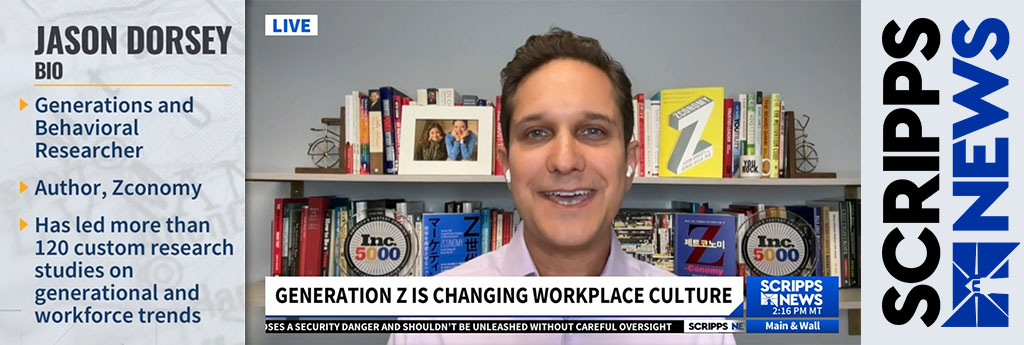My SHRM Interview: Selected Insights for Managing Employees Virtually and with Kindness

I shared with SHRM how important it is to stay connected with employees in a time when many of our interactions are virtual-only.
- How you let go of employees in a virtual-only environment has a huge impact on the employees who stay
- Set your organization up for success, especially during tough times when your organization’s priorities and culture will be highlighted
As a generational researcher, HR keynote speaker, and author of Zconomy, my newest best-selling book about Gen Z as employees and trendsetters, I shared how important it is for HR managers to navigate the world of remote and virtual work as a large percentage of American workers continue to work outside of a traditional office setting. Below are some of the selected insights I shared with Kathleen Doheny, who writes for the Society of Human Resource Managers (SHRM).
How we communicate with one person on our work team can affect everyone else
As I share in my executive and board briefings with our corporate clients, in virtual keynotes for associations, and previous posts on this blog, it is essential to communicate effectively during this unprecedented time. In times like these, HR managers and leaders must rise to the challenge and meet their employees where they are, even if that is fully virtual. This includes being a virtual resource for both the employees who are driving outstanding results as well as those that a company is no longer able to keep employed—potentially through no fault of their own.
As I shared with SHRM, “[too many] Employers are letting go of employees in groups over Zoom or in mass, generic e-mails and messages. Not only does that feel impersonal to the employee who is let go, but it also sends a very clear, negative message about how the company really views its people to the employees who remain.”
Show your compassion, and other team members will rise to the moment
It is essential to show that as an HR leader, you care about those you have hired and those who must be let go—especially those who must be let go through no fault of their own. In this always-interconnected world, information about how people are terminated spreads instantly via text, email, IM, group chat, and more—as well as living online forever on employer rating sites such as Glassdoor, Indeed, or LinkedIn. If your employees see their colleagues being let go in an impersonal way, such as the awful mass employee firings over Zoom that have grabbed news headlines, it will lead those remaining at your organization to no longer believe that their company respects and values its team members. In this challenging economic climate, reductions in workforces are a reality. However, HR leaders have the option to make these moments reflective of the company culture and compassion for employees, even those being let go, and show what a company truly stands for beyond profit and mission statements.
As I shared with Kathleen Doheny for SHRM, “Avoiding a remote layoff might not be possible, but it is best to have that conversation one-on-one via a video chat if possible. Managers should also help the laid-off employees by asking HR to be sure to let them know about transition services or insurance coverage after their departure.”
Along with my co-author, Dr. Denise Villa, we write about specific best practices in the workplace—including recruiting, retaining, and motivating Gen Z and all generations—in our latest book, Zconomy: How Gen Z Will Change the Future of Business—and What to Do About It. We are thrilled that Zconomy is going to be published in South Korea, Japan, Brazil, and many more countries!
How Can You Better Lead Your Remote-Working Employees?
There are many challenges facing CEOs, CHROs, and people-leaders in diverse industries, from healthcare and technology to retail and manufacturing. During this unprecedented time, leaders and managers must ensure that their business can engage their remote workforce to unlock their talent, loyalty, performance, and innovation to emerge from this challenging period stronger and poised for growth.
At CGK, we are continuously researching how Gen Z and all generations are thinking about work, communication, company culture, family, spending, the economy, and much more throughout the pandemic. My team and I are providing these insights to you as custom leadership briefings, webinars, and virtual keynote presentations to help leaders at all levels be accurately informed with missing data and solutions to drive results at this incredibly important time.
Contact my friendly team here for information on our custom research, speaking, and generational advisory services to help your team and organization lead and solve challenges across generations quickly.




